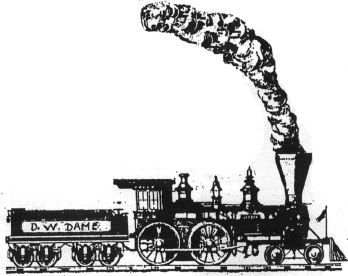
Discover rewarding casino experiences. 
|
But it had lost America in the Revolutionary War a little over seventy-five years before. Despite the United States separating from the “Mother Country,” there were many close ties and it was still “Back Home” to many, especially now that the railroad was going through Carroll County, funded by the bank in Scotland. Other than naming the town on the prairie, Lanark, for the shire in Scotland where the money originated, several of the streets took on Scottish names such as Burns, Boyd, Rochester, Argyle, Claremont and so forth. And, too, the Brits were interested in what was going on in the raw frontier of the Midwest, to say nothing of the Far West ad Southwest yet to be “civilized” and much of it separated into states. The British, Scots, Irish and citizens of Wales, along with many from the Continent itself; the Germans and Poles, a few French and Scandinavians made a mix of flavors for the melting pot we became. Journalists came from newspapers throughout, here and abroad, including one from the “London Daily Telegraph” in the first months of 1862 just about three, four, five, six months after the railroad entered Section 5 of Rock Creek Township, Carroll county on its way to the Mississippi from Racine, Wisconsin. Shannon, up the line a few miles, had been laid out in 1860, named for its “founder” William Shannon, one of the doers and donors who was familiar to the early day. The journalist from London was Edward Dicey who, though less well-known than the famous Anthony Trollope, was just as keen an observer and capable a recorder of the American scene. He first spent some months in the East and, of course, reported on the Civil War begun in April of 1861, and like others started his Illinois trek at the bottom tip of Illinois at Cairo. Chicago, naturally, was visited but Dicey wanted to see the many new towns springing up on the largely virgin prairie, something they’d long ago done in England except for the factory towns then being built with the coming of the Industrial Revolution. Although a reference states Lanark “never lived up to its boastful potential,” it did survive to become a bustling little town serving the rural surrounds. Following is a reprint of Edward Dicey’s account of his trek through the Northwest corner of Illinois. This was published first in 1863 as “Six Months in the Federal States,” according to one source. At some point it was also called “Spectator of America.” Locally it was printed in the “Mt. Carroll Mirror” in August of 1862. “In company with a friend at whose house I was stopping at Racine, I went out onto the prairie to visit the town of Lanark situated on the extreme northwestern frontier of Illinois. It is no good trying to refer to a map of the United States to ascertain the locality of this city. It had not yet then completed its first year of its existence and was inscribed on no chart or map as yet designed. Probably beyond a circle of twenty miles radius around Lanark, there was not a score of people who knew there was such a place, still less that there was a rising locality. In the Far West cities start like Aladdin’s Palace. You read of this mushroom growth in books of travel but it’s hard to realize it without seeing the spot. You pass through the grand city of Chicago with its splendid streets, quay avenues, and are told that not a building stood thirty years ago except an old mud fort to keep off the Indians, and that the first child ever born in the city was married just the other day ... Because in French phrase, I have assisted at the birth of Lanark City that I have taken it as the specimen of the Western settlement. Between Lake Michigan and the Mississippi River lies the prairie land of Illinois. From river to lake there runs a host of railroads, and among them there is one in process of construction called the “Racine and Mississippi.” If you take any map and draw a straight, or what Americans call an “air-line,” from Racine to the nearest point on the Mississippi, you will have the exact course of the railroad, and twenty miles or so from the river you will have the terminus of the railroad, Lanark City. I was in company with George Thomson, the English proprietor of the railroad and founder of the City of Lanark and that Lanark and I became acquainted with each other. (It was Thomson for whom that town in Carroll County was named. C. Aschenbrenner.) The course of emigration, naturally enough, caused the border of the rivers and lake highways to be the first occupied by the settlers, and it only slowly now that the inland districts of the Western States become settled. Thus the interior of Northern Illinois is a great prairie country, dotted here-there with new cities. Railroads are not constructed to connect existing towns as to open new ranges and if the “Racine and Mississippi” had to depend on the custom (trade) of those settled along its route before the line was made, its chances of profit would be a small one. For miles and miles our road lay along a silent, almost deserted prairie—every now and then through a hillock, or a short embankment over a hollow and then a flat bridge carried on piles across a marshy stream but as a rule a long, level track scarcely raised above the ground and stretching for miles before and behind you. Right in the middle of the prairie the railroad came to an end at Lanark. Alongside the depot stood a sort of railroad caravan which had been the first house in Lanark. When the rail was finished there was not a hut or covered dwelling of any kind there so the caravan was sent down there to serve as shelter for railroad servants. By this time it had served its purpose and I heard the order given for it to be sent back to Racine to be used elsewhere to be used for like purpose. Close to the station there was a hotel already built; not a pot house or a roadside tavern, but a genuine, well-ordered inn. If course, being in America it had a bar room, a public room with long tables and public meals at fixed hours. It was clean, too, and neatly furnished as hotels in the Free States mostly are. The only national institutions of which it as deficit was a gong. The first landlord there had been three—had levanted with it, taking that inevitable deafening instrument of torture on his departure and it had yet to be replaced, happily. There was a piano in the house belonging to the wife of a gentleman on the line and in his room I found copies of “Macaulay’s History” and Gibbons’ “Decline and Fall.” The hotel was the property of the Company (railroad) and had been built by them to induce settlers to come to the place, and it seemed to be doing a good business. Meanwhile, the town was fast growing up around it. Lanark, like all Western towns, was built on the simplest of plans. The owners or projectors of the settlement buy a certain number of acres, draw out a plan of the town, dividing it into streets and lots and allow purchasers to build any sort of dwelling on his lot he likes. The houses may be as irregular and unlike as possible but as the spaces allotted for the streets are not to be encroached upon, the general plan must correspond to the chart. The map of the town had been drawn out by a Scottish clerk in the service of the railroad who had undertaken the task of naming the streets. To display his nationality he had given Scotch names—Bute, Argyle, Forth and Moray and Macs innumerable and had only condescended to American prejudice so far as to permit there being a Main and Chestnut streets. Most of these streets, however, were still to be streets of the future and the influx of population had only called Main and Bute into existence. The first of these is the commercial thoroughfare of Lanark and in it there were some twenty shops already established. I noted two competing iron mongers and tin men whose stores seem plentifully stocked.
Two or three rival groceries, two saddle and harness makers and a couple beer and oyster saloons, a tailor, shoemaker and a lawyer’s office. Besides these there were two large store building, one of which was to be a furniture warehouse, and the other, I think, a dry goods store. Bute Street consisted of cottages. A number of shanties were scattered round the place but not yet close enough to one another to form streets. Every house in the place was of wood, many of them, two, even three stories high. The majority of the houses had curtains and green veranda shutters and even the poorest I looked into were far superior to an ordinary English laborer’s cottage. Not to mention they were clean and airy. The streets were mere tracks of prairie land hardened by the wheels of teams of which the town was full but there were planked footpaths raised along Main Street. (Now Broad Street!) The object, indeed for which Lanark has been founded is to form a depot for agricultural produce. Next week—More of the founding story 150 years ago.
|





